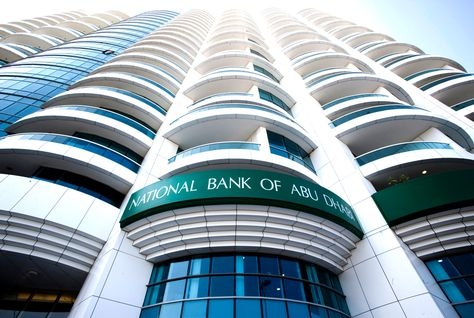Growth in lending at the emirate’s top banks remained slow during the first half of 2012, but profits were generally up on those of the previous year. Meanwhile, the banking sector is preparing to comply with a new regulation from the Central Bank of the UAE that has been designed to reduce exposure to government-related entities (GREs).
National Bank of Abu Dhabi loans and advances increased by 2.1% year-to-date as of June 2012
In July the National Bank of Abu Dhabi (NBAD), the emirate’s largest bank as measured by assets, and the number two lender in the country, reported that its loans and advances increased by 2.1% year-to-date as of June 2012, which the lender referred to as “subdued growth”.
Meanwhile, at Abu Dhabi Commercial Bank (ADCB), the emirate’s second-largest bank, loans and advances were down slightly over this same period, from Dh124.8bn ($34bn) at the end of 2011 to Dh123.4bn ($33.6bn) as of June. This was consistent with overall lending in the UAE, which according to data from the central bank, rose by 1.8% between December 2011 and June 2012.
First Gulf Bank (FGB) loans and advances increased by 6% during the first half of the year
Among the top three lenders in Abu Dhabi, the one that bucked the trend of flat lending was First Gulf Bank (FGB), where loans and advances increased by 6% during the first half of the year to reach Dh110.9bn ($30.2bn). Profits at the bank were also up by 14%, with second-quarter net profits reaching Dh1bn ($272.3m), compared to Dh890m ($242.3m) in the same quarter in 2011. Results for the first half of 2012 were similar, with net profits increasing by 11% over the prior year. The lender attributed its improved profitability to a rise in lending and an improved net interest margin.
NBAD and ADCB also did well in terms of profits, beating the expectations of analysts polled by Reuters. NBAD announced a 2% rise in second-quarter profit over the same period in 2011, which the bank attributed to higher net interest income. ADCB was helped by significantly lower provisions, but a year-on-year profitability comparison is difficult to make due to a one-off gain booked in the second quarter of 2011 from the sale of a stake in a Malaysian bank.
New regulatory change by the Central Bank specifies that a bank’s aggregate lending to the local governments of the UAE and their non-commercial entities cannot exceed 100% of the bank’s capital base
Meanwhile, a regulatory change is set to come into effect at the end of September 2012 that could affect lending activity. The new rule, first announced in April 2012 by the Central Bank of the UAE, specifies that a bank’s aggregate lending to the local governments of the UAE and their non-commercial entities cannot exceed 100% of the bank’s capital base, while individual borrowers are limited to 25%.
Similar regulations were introduced for commercial entities of the federal and emirate governments, with the added restriction that funded exposure to individual borrowers is capped at 15% of the capital base. Lenders were told that they had until September 30, 2012 to comply with the new limits.
The regulation has been broadly welcomed as a prudent response to the potential concentration of risk within the sector
The regulation has been broadly welcomed as a prudent response to the potential concentration of risk within the sector. Colin Fraser, the executive vice-president and group head of wholesale banking at ADCB, told OBG that the central bank’s move was aimed at preventing excessive concentration risk while acknowledging the general strength of GREs.
“It’s a straight-forward concept,” he said. “GREs in Abu Dhabi are solid, but even with these [entities there] comes a point where you get over-concentrated. The approach seeks to prevent excessive concentration to any counterparty, which is good prudential regulation.”
The move by the central bank was also positively received by the IMF
The move by the central bank was also positively received by the IMF, which pointed out in its May 2012 Article IV staff report on the UAE that “shielding the banking system from further GRE risks is key” to the health of the country’s financial sector. According to the international agency, during 2011 the net exposure of UAE banks to the government and public institutions grew by Dh44.1bn ($12bn), equivalent to about 3.5% of GDP. And as the IMF added, this amount could potentially rise if the GREs were to face challenges in re-financing their debts in international capital markets.
Policies that limit exposure to the GREs will no doubt help ensure stability in the banking sector, but overall, the IMF has painted a picture of the country’s lenders that is already quite positive, concluding that the UAE’s financial sector is “resilient to domestic and external shocks, thanks to the central bank’s strong regulation and macroprudential policies”, adding that banks are highly capitalized and profitable.
Oxford Business Group
1 October

























































